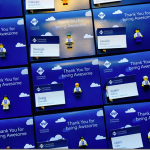
by Dan Toomey | Apr 7, 2017 | BizTalk Community Blogs via Syndication
(This post was originally published on Mexia’s blog on 07 April 2017)
Last weekend I had the great privilege of attending my first Microsoft MVP event – the MVP Community Connection held in Sydney. This was an invitation to all Australian MVPs to come together over two days to network, receive central communication from the program managers, and learn some best practices in how we can better serve the community.
First I should explain what an MVP is. The Microsoft Most Valuable Professional award is presented to recognised experts in the technical community who regularly and voluntarily share their passion and knowledge with others, including Microsoft itself. The award celebrates an individual’s deep commitment to serving the community and promoting awareness of Microsoft’s great products through a variety of channels – be it running user groups, speaking at events, blogging, mentoring, answering questions on forums, creating and sharing free software, etc. Aside from recognition, the award includes a number of benefits and privileges, including direct access to the Microsoft product teams via email distribution lists and Yammer, invitations to early previews and Product Group Interaction (PGI) meetings, exam vouchers, free software and subscriptions, and more. In return, Microsoft expects us to use these benefits and privileges to facilitate our continued involvement in the community and also to provide valuable feedback to Microsoft to help them design and build better products. The award lasts for one year, after which it may be renewed if the candidate has continued to demonstrate exemplary commitment and service.
The award is always granted in a particular Microsoft technological area or product for which the candidate has demonstrated expertise. My award was presented in February this year in the category of Azure – one of the broadest areas which happens to include enterprise integration. This was presumably in recognition of my efforts in running two user groups, speaking at multiple events (including Ignite Australia), writing posts on both Mexia’s and my personal blog, and promoting Microsoft events and announcements on social media. Yet, I always feel that I should be doing much more to serve an integration community that is always so willing to share and so appreciative of the efforts of those who do share!
This latest MVP event in Sydney was designed to allow us to come together and share ideas about how to improve our community leadership. It began with some fun networking activities on Friday afternoon & evening, followed by a more formal schedule of sessions on Saturday. It was a nice touch to arrive at the venue on Saturday morning and be presented with a personalised appreciation card complete with a custom Lego figurine. It quickly became evident that each Lego figurine was carefully selected to match the physical characteristics of the recipient in terms of hair colour, gender, etc!
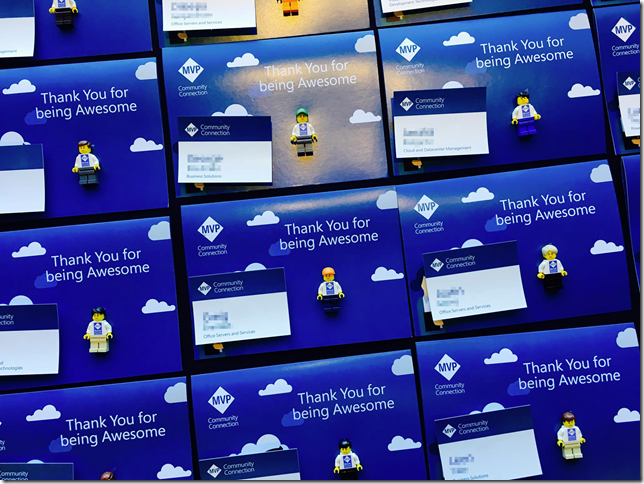
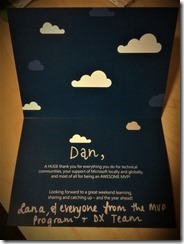 After a warm welcome by Community Program Manager Lana Montgomery and a program update by Chris Olson from the DX team, there was a keynote about Digital Transformation by Technical Evangelist Vaughan Knight. This was followed by a series of enlightening “Skills Sessions” presented by prominent members of the MVP community including Troy Hunt, Orin Thomas, Marc Kean, Robert Crane, Leon Tribe and David Gardiner, spanning topics from developing your personal brand to blogging like a pro to recharging your user group. These were followed by some round table discussions around various topics relating to community involvement such as growing technical communities, embracing emerging technologies, supporting entrepreneurs and start-ups, and assisting young student technologists. The day wrapped up with some closing remarks by Lana and then a trip to the Helm Bar in Darling Harbour for some refreshing drinks before heading to the airport.
After a warm welcome by Community Program Manager Lana Montgomery and a program update by Chris Olson from the DX team, there was a keynote about Digital Transformation by Technical Evangelist Vaughan Knight. This was followed by a series of enlightening “Skills Sessions” presented by prominent members of the MVP community including Troy Hunt, Orin Thomas, Marc Kean, Robert Crane, Leon Tribe and David Gardiner, spanning topics from developing your personal brand to blogging like a pro to recharging your user group. These were followed by some round table discussions around various topics relating to community involvement such as growing technical communities, embracing emerging technologies, supporting entrepreneurs and start-ups, and assisting young student technologists. The day wrapped up with some closing remarks by Lana and then a trip to the Helm Bar in Darling Harbour for some refreshing drinks before heading to the airport.
The event was not only well organised, informative and enjoyable, but I also found it truly inspiring to meet up with so many other enthusiastic technologists! While you might expect it to be intimidating to be a newbie in the company of so many extraordinarily brilliant and accomplished individuals, I actually found everyone to be extremely friendly and welcoming. I made many new friends that day as well as catching up with some old friends like Bill Chesnut, Mick Badran, Shane Hoey and Martin Abbott. Kudos to Lana for her exceptional organisational skills and her contagious positive energy! Really looking forward to more occasions like these, as well as the continuing support from Microsoft which helps us MVPs better support the wider community.
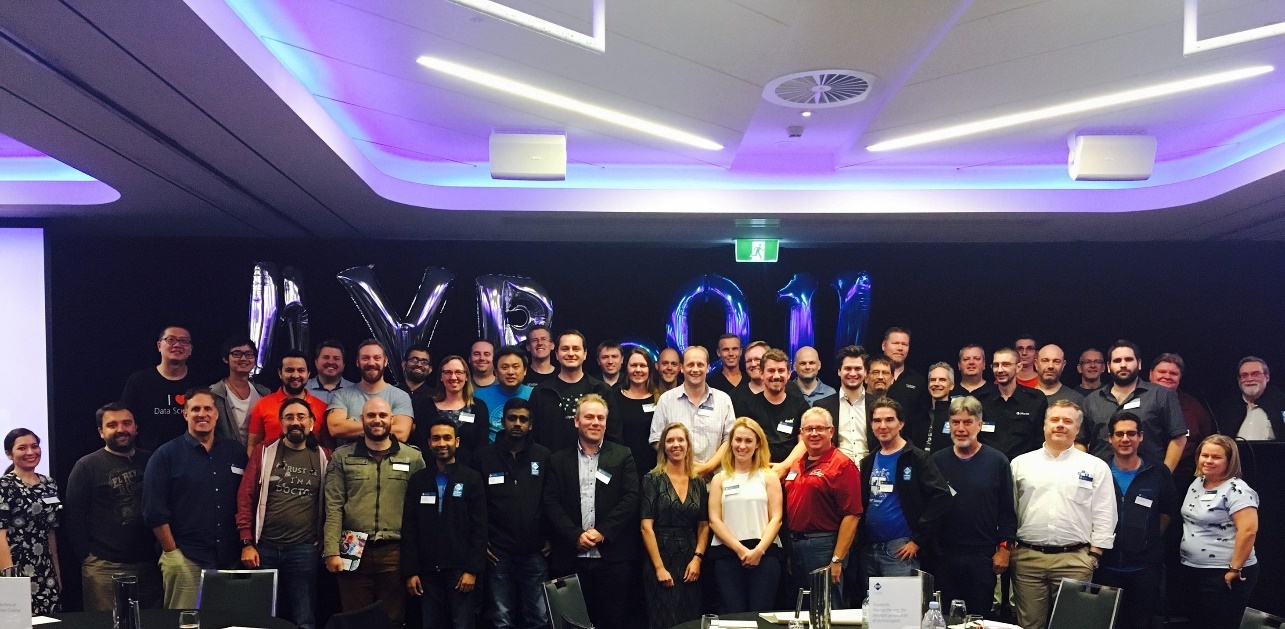
Photos courtesy of Lana Montgomery

by stephen-w-thomas | Apr 6, 2017 | Stephen's BizTalk and Integration Blog
I had a great time presenting at the Microsoft Technology Center a few weekends ago in Manhatten covering Azure Functions and Azure Logic Apps as part of the Global Integration Bootcamp!
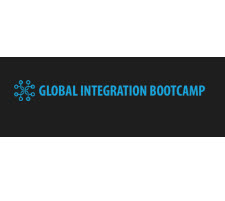
We had a great group of presenters and an even better group of participants.
If you are interested in the slides and lab for the session, you can download them below. The topics covered are Azure Logic Apps, Azure Functions, and Azure Storage,
Download Slides: Logic App Cloud Adapters, Functions, and Storage
Download Lab: Lab – Logic App Cloud Adapters, Functions, and Storage
Notes for the lab: You need a hosted email account (Gmail, Outlook, Office 365, etc) and a trail Twilio account (this can be skipped if you don’t want to receive a text)

by Sandro Pereira | Apr 5, 2017 | BizTalk Community Blogs via Syndication
Well, Empowering Hybrid Integration segment is online since January 30, 2017, but only now I realize that… During the MVP Global Summit, and taking the opportunity of having most of the Integration MVPs gathered at the event, Microsoft Pro Integration team tends to invite the MVPs to create short videos – 8 to 10 minutes videos – about Integration (on-premise or in the cloud). It happened in previous editions of the Summit and it happened in the last edition in which they invite us to talk about Hybrid Integration that includes BizTalk Server, Azure Logic Apps, Azure API Management and Azure Service Bus.
For several reasons, I never had the chance to accept the challenge in the past, but last year I was able to accept the invitation to speak and record at the “famous” Microsoft Building 20, building that is the home of Channel 9 studio …

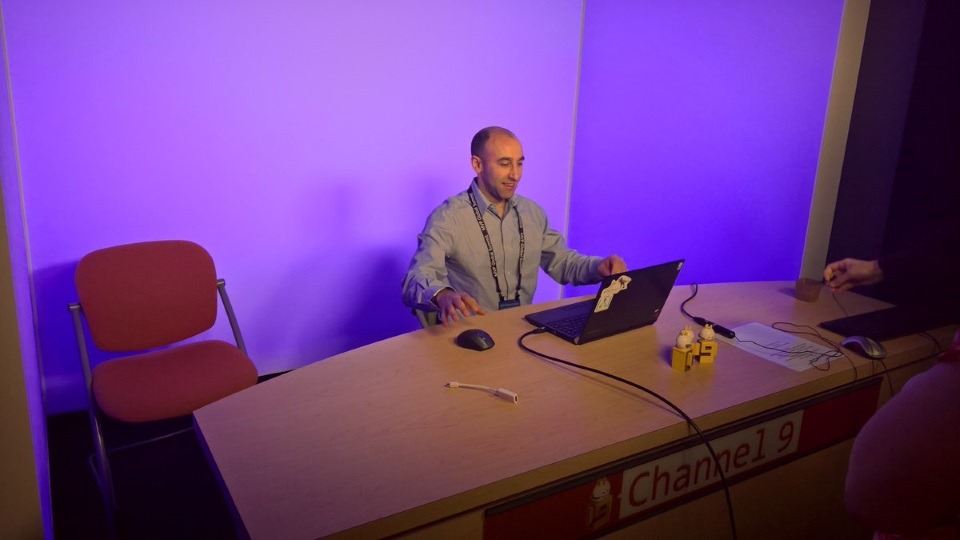
… and make a short talk about Hybrid Integration using Service Bus Queues, BizTalk Server, Dynamic CRM, SQL Server, Logic Apps and File.
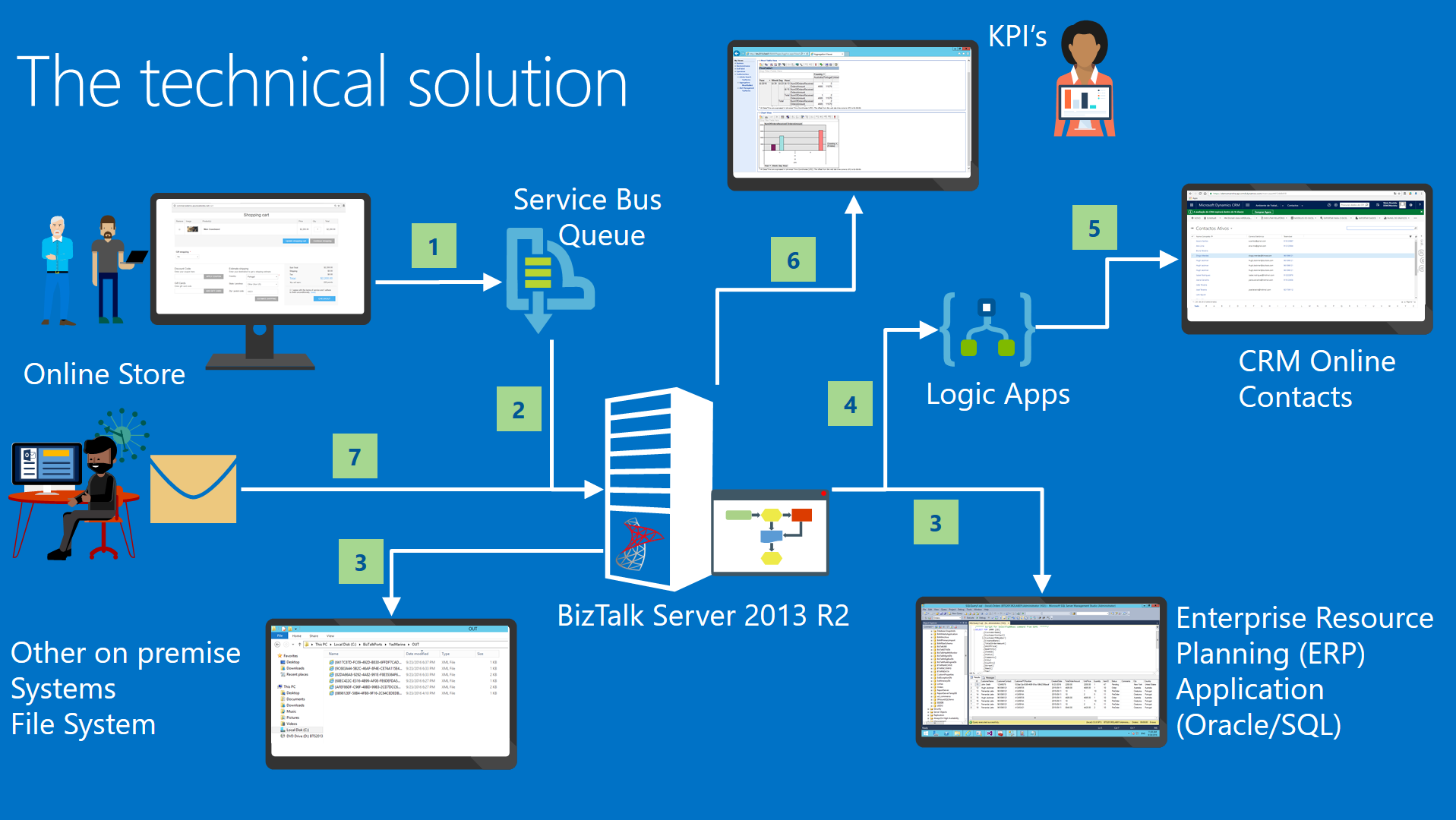
Has I told in a previous post of my blog, that was my first experience, and I have to confess, I was a little nervous to be recording in a small professional studio, so as expected after seeing the record in its raw state, the end result could have been better, but, fortunately for you guys I was able to edit the video and remove some breaks/delays between switching from my presentation slides to my screen. Nevertheless, for a first experience, it went pretty well and I am happy with the result. The important for me is to face new challenges, different situations, leave my comfort zone and improve to be better next time.
The result is this 8 minutes video on Empowering Hybrid Integration where you can learn how you can create powerful hybrid integration solutions using existing on-premises and cloud based solutions.
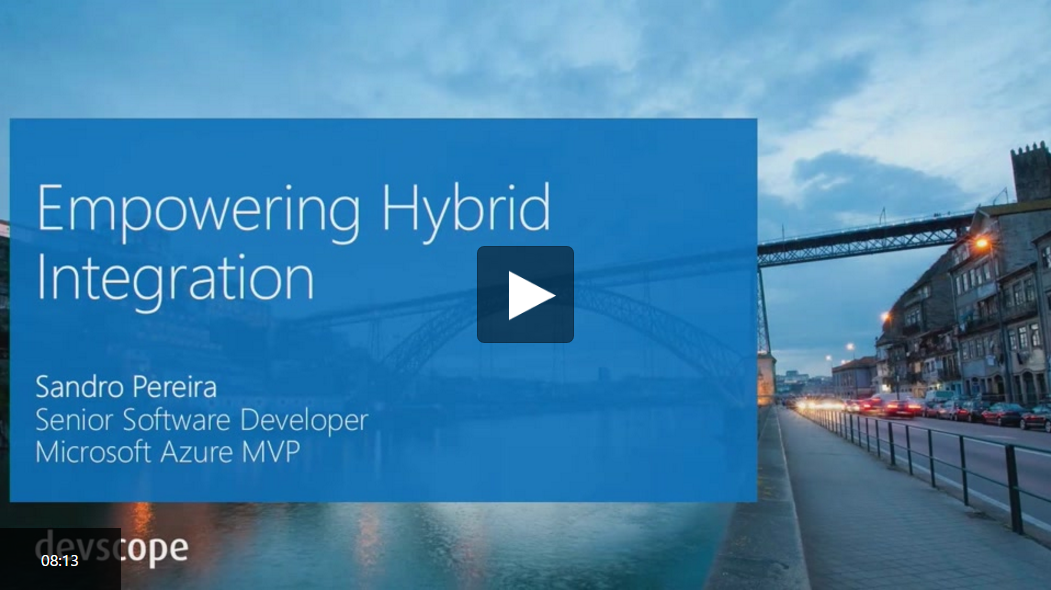
Fortunately, I had the company of my good friend Kent Weare in this small “adventure”:
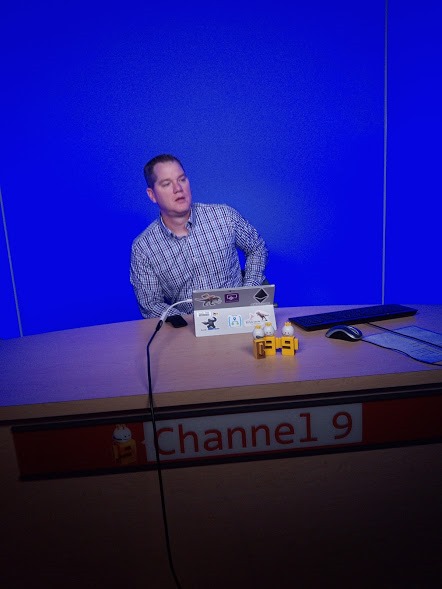
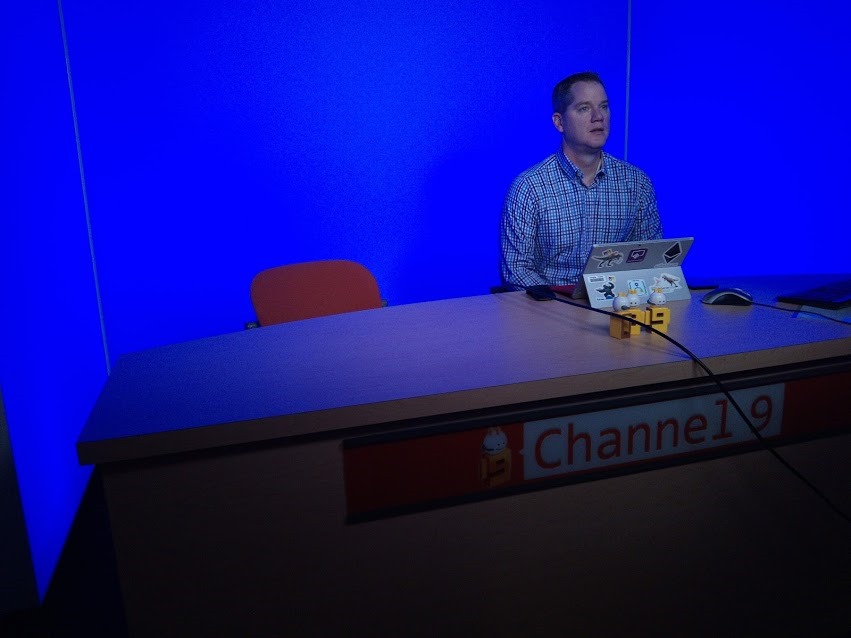
You can also watch his session about “Protecting Azure Logic Apps using Azure API Management”. In this video, you can learn how to use Azure API Management to protect your Logic Apps.
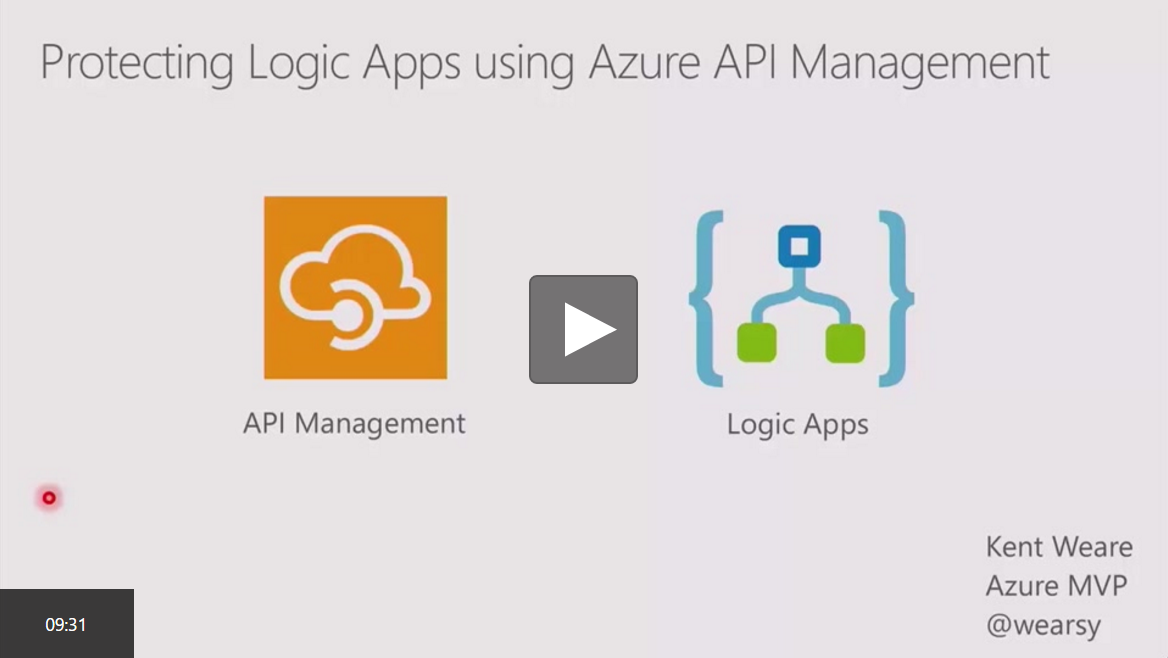
You can watch more sessions regarding Microsoft’s Hybrid Integration Platform on Channel 9 here.
Author: Sandro Pereira
Sandro Pereira lives in Portugal and works as a consultant at DevScope. In the past years, he has been working on implementing Integration scenarios both on-premises and cloud for various clients, each with different scenarios from a technical point of view, size, and criticality, using Microsoft Azure, Microsoft BizTalk Server and different technologies like AS2, EDI, RosettaNet, SAP, TIBCO etc. He is a regular blogger, international speaker, and technical reviewer of several BizTalk books all focused on Integration. He is also the author of the book “BizTalk Mapping Patterns & Best Practices”. He has been awarded MVP since 2011 for his contributions to the integration community. View all posts by Sandro Pereira

by Nino Crudele | Apr 4, 2017 | BizTalk Community Blogs via Syndication
In the last period, I invested time in something that I think is one of the most important aspect in the integration space, the perception.
During my last events I start introducing this topic and I’m going to add a lot more in the next future.
In Belgium, during the BTUG.be, I shown my point of view about open patterns and in London, during the GIB, I presented how I approach to the technology and how I like to use it, I’ve been surprised by how many people enjoyed my sharing.
The Microsoft stack is full of interesting options, in the on premise and Azure cloud space, people like to understand more about how to combine them and how to use them in the most profitable way.
In my opinion, the perception we have about a technology is the key and not the technology itself and this is not just about the technology but this is something related about everything in our life.
We can learn how to develop using any specific technology stack quite easily but it is more complicate to get the best perception of it.
I like to use my great passion for skateboarding to better explain this concept, a skateboard is one of the most simple object we can find, just a board with 4 wheels and a couple of trucks.

It is amazing seeing how people use the same object in so many different ways, like vert ramps, freestyle, downhill or street and how many different combinations of styles in each discipline and each skater has an own style as well.

Same thing needs to be done for the technology, I normally consider 4 main areas, BizTalk Server, Microsoft Azure, Microsoft .Net or SQL and the main open source stack.

I don’t like to be focused about using a single technology stack and I don’t think is correct using a single technology stack to solve a problem.
For instance, BizTalk Server is an amazing platform full of features and able to cover any type of integration requirement and looking to the BizTalk architecture we can find a lot interesting considerations.
The slide below is a very famous slide used in millions of presentations.
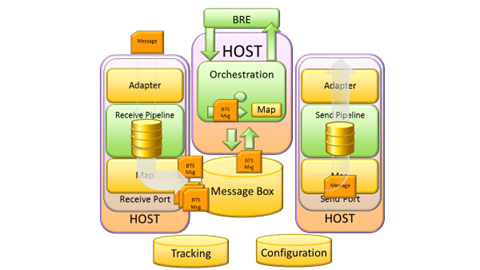
Most of the people look at BizTalk Server as a single box with receive ports, hosts, orchestrations, adapters, pipelines and so on.
When I look to BizTalk Server I see a lot of different technology stacks to use, to combine together and to use with other stacks as well.
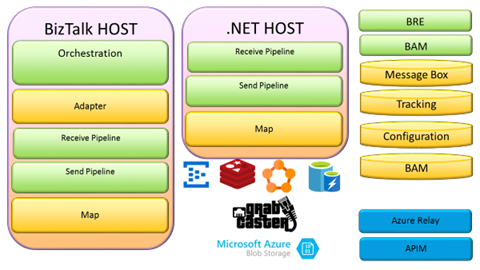
I can change any BizTalk Server behaviour and I can completely reinvent the platform as I want, I don’t see real limit on that and same thing with the Microsoft Azure stack.
Microsoft Azure offers thousands of options, the complicate aspect is the perception we have for any of these.
Many times our perception is influenced by the messages we received from the community or the companies, I normally like to approach without considering any specific message, I like to approach to any new technology stack like a kid approach to a new toy, I don’t have any preconception.

Today we face a lot of different challenges and one of the most interesting is the on premise integration.
The internal BizTalk architecture itself is a good guidance to use, we have any main concept like mediation, adaptation, transformation, resilience, tracking and so on.
If we split the architecture in two different on premise areas we open many points of discussion, how to solve a scenario like that today?
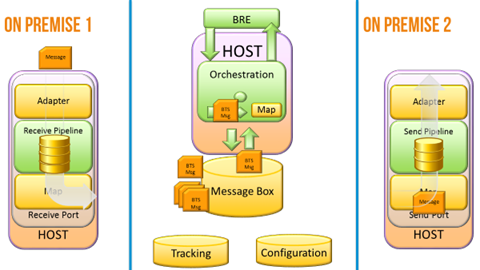
Below is the same architecture but using any technology stack available, during the GIB I shown some real cases and sample about that.
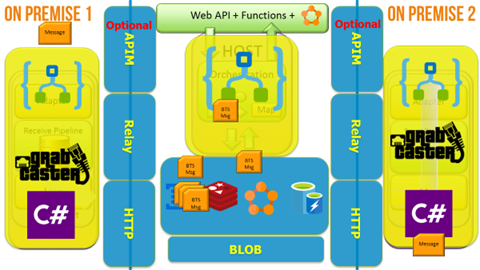
I also like to consider event driven integration and in that case GrabCaster is a fantastic option.
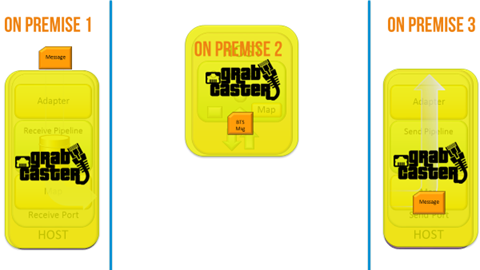
My next closets event will be TUGAIT in Portugal, TUGAIT is the most important community event organized in Portugal, last year I had the privilege to be there and it was an amazing experience.
3 days of technical sessions and covering any technology stack, integration, development, database, IT, CRM and more.
Many people attend TUGAIT from any part of the Europe, I strongly recommend to be there, nice event and great experience.
Author: Nino Crudele
Nino has a deep knowledge and experience delivering world-class integration solutions using all Microsoft Azure stacks, Microsoft BizTalk Server and he has delivered world class Integration solutions using and integrating many different technologies as AS2, EDI, RosettaNet, HL7, RFID, SWIFT. View all posts by Nino Crudele

by Sandro Pereira | Apr 3, 2017 | BizTalk Community Blogs via Syndication
Today I’m going to write about a different topic, we can say that is related to technology but not exactly a technical blog post. And no, I’m not feeling special (I’m always feeling special but in different contexts), proud and honored today because it’s my birthday.
January 1st, 2011, will always be a special day for me, it was the day I had the honor of being awarded Microsoft Most Value Professional (MVP) for the first time which was an unexpected good surprise. This is my 7th straight year on the MVP Program and since the first day, it has been a delighted journey and experience. I was the first and for many years the only MVP at my company DevScope but, contrary to what many people might think, is was not for that reason also that I could feel special. I’m feeling special for somehow, directly or indirectly, being able to help to grow the spirit of community collaboration, a little more (because it always existed), internally at the company and sometimes, maybe, by serving as a mentor, a role model or an inspiration to others. But especially by encouraging and helping everyone to start contributing and share their knowledge with the communities, often challenged them to collaborate with me on small projects.
I’m feeling special, proud and honored today to be part of a company who after all these years still keeps their main core identities, with a focus on cutting-edge technology, early adopter in most cases, focus on innovation and helping with the needs of our clients, but without losing the focus on the people, helping them to grow personal and professional. I’m feeling special, proud and honored today because I can say that I work with a team of amazing professionals and special to be able to realize that we already have 3 MVPs at DevScope, one former MVP and one Microsoft Regional Director (there are not many companies worldwide that can boast on these facts).
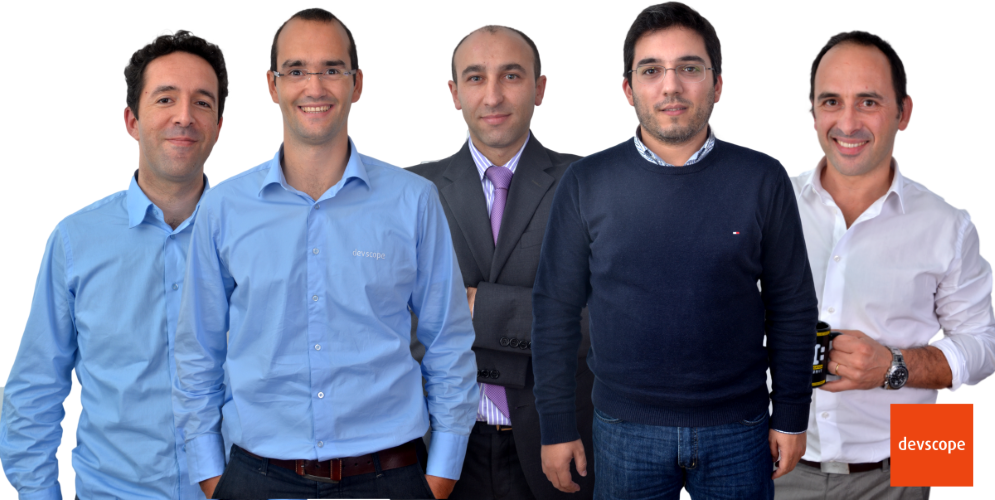
I’m feeling special, proud and honored today, not also for working with such hard working and talented team, but also, for being able to realize that new talents are being formed.
… but let’s also be fair, I way also feeling special, proud and honored today because it is my birthday and I have an amazing family, an amazing job and the best friends in the world!
Author: Sandro Pereira
Sandro Pereira lives in Portugal and works as a consultant at DevScope. In the past years, he has been working on implementing Integration scenarios both on-premises and cloud for various clients, each with different scenarios from a technical point of view, size, and criticality, using Microsoft Azure, Microsoft BizTalk Server and different technologies like AS2, EDI, RosettaNet, SAP, TIBCO etc. He is a regular blogger, international speaker, and technical reviewer of several BizTalk books all focused on Integration. He is also the author of the book “BizTalk Mapping Patterns & Best Practices”. He has been awarded MVP since 2011 for his contributions to the integration community. View all posts by Sandro Pereira
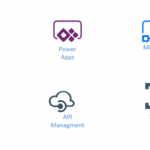
by Gautam | Apr 2, 2017 | BizTalk Community Blogs via Syndication
Do you feel difficult to keep up to date on all the frequent updates and announcements in the Microsoft Integration platform?
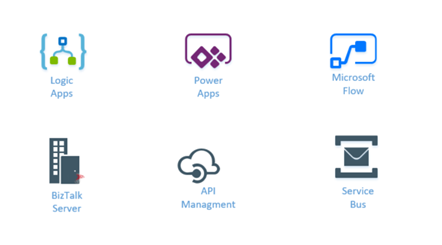
Integration weekly update can be your solution. It’s a weekly update on the topics related to Integration – enterprise integration, robust & scalable messaging capabilities and Citizen Integration capabilities empowered by Microsoft platform to deliver value to the business.
If you want to receive these updates weekly, then don’t forget to Subscribe!
On-Premise Integration:
Cloud and Hybrid Integration:
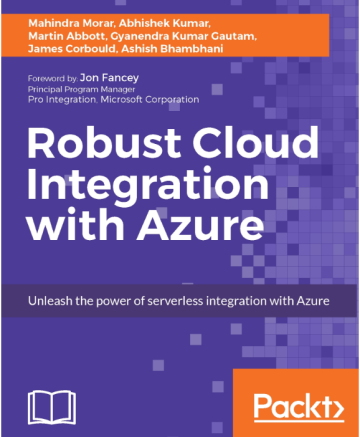
Feedback
Hope this would be helpful. Please feel free to let me know your feedback on the Integration weekly series.
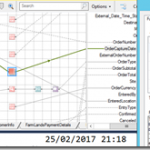
by Mark Brimble | Apr 1, 2017 | BizTalk Community Blogs via Syndication
NZ daylight saving time ends at 3a.m today (2/3/2017) ends. To celebrate this I am going to share a string datetime functoid that I have used for many years.
A common task when mapping one message to another is transforming a date e.g. 1/3/17 15:30 to 2017-03-01T15:30+13:00. Many years ago I was reviewing some maps in a BizTalk solution and discovered that just about every map was using different C# code in a C# scripting functoid to transform between date formats. I decided to create a functoid that would convert any string that was a valid date to any other date format. The two objectives were to make sure that all date format changes were consistent and it was easy to use.
Here is are some maps that show cases the StringDateTime functoid. In this case the UTC date 2017-02-25T08:18:48.000Z is transformed to 25/02/2017 21:18
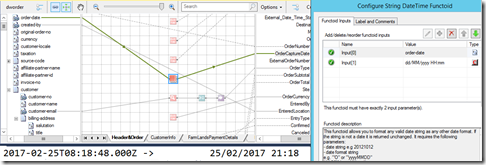
Note in the example above that the time is incremented by 13 hours because on the 25/2 NZ is on daylight saving and is UTC+13.
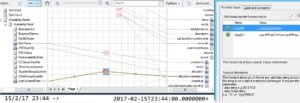
The code that does the work is shown below.
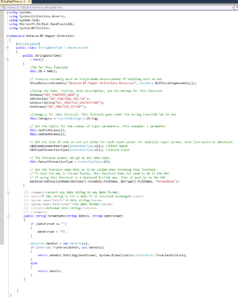
You can download the class file, bit map and resource file from
here if you want to create the functoid yourself. Please see one of
Sandro Pereira’s posts if you need any help to create it.
In summary this BizTalk functoid gives consistency to the way dates are formatted and is easy to use. All you need to enter is the either a standard date format or a custom date format.


 After a warm welcome by Community Program Manager Lana Montgomery and a program update by Chris Olson from the DX team, there was a keynote about Digital Transformation by Technical Evangelist Vaughan Knight. This was followed by a series of enlightening “Skills Sessions” presented by prominent members of the MVP community including Troy Hunt, Orin Thomas, Marc Kean, Robert Crane, Leon Tribe and David Gardiner, spanning topics from developing your personal brand to blogging like a pro to recharging your user group. These were followed by some round table discussions around various topics relating to community involvement such as growing technical communities, embracing emerging technologies, supporting entrepreneurs and start-ups, and assisting young student technologists. The day wrapped up with some closing remarks by Lana and then a trip to the Helm Bar in Darling Harbour for some refreshing drinks before heading to the airport.
After a warm welcome by Community Program Manager Lana Montgomery and a program update by Chris Olson from the DX team, there was a keynote about Digital Transformation by Technical Evangelist Vaughan Knight. This was followed by a series of enlightening “Skills Sessions” presented by prominent members of the MVP community including Troy Hunt, Orin Thomas, Marc Kean, Robert Crane, Leon Tribe and David Gardiner, spanning topics from developing your personal brand to blogging like a pro to recharging your user group. These were followed by some round table discussions around various topics relating to community involvement such as growing technical communities, embracing emerging technologies, supporting entrepreneurs and start-ups, and assisting young student technologists. The day wrapped up with some closing remarks by Lana and then a trip to the Helm Bar in Darling Harbour for some refreshing drinks before heading to the airport.




























